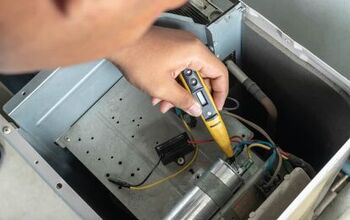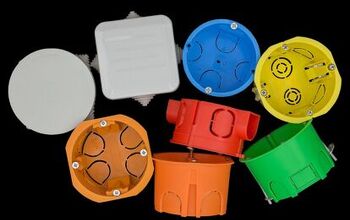Can You Stay In A House With Fleas?

Pet owners often view their dogs and cats as their furry children and would do anything to protect them. That’s why finding fleas, ticks, roundworms, and other pests on your pet can make your home a stressful environment. So, can you stay in a house with fleas?
You can stay in a house with fleas, but you must immediately treat your pets and remove eggs to reduce the population. Treat your pets with Frontline, then meticulously vacuum your carpets and rugs to remove hard-to-find eggs. It’s also important to wash your clothes and bedding with hot water if you frequently cuddle your pets and sleep in bed with them.
Fleas can transmit diseases, and they rarely go away without intervention. That’s why time is money when it comes to getting rid of fleas in a house. Follow along as we explore everything you must know about living in a house with fleas.
Is It Safe To Stay In A House With Fleas?
Staying in a house with fleas is quite risky, as you don’t know what other animals and people they’ve bitten. Fleas can carry diseases, such as spotted fever, murine typhus, and cat scratch disease, which is quite devastating. They can also transmit tapeworms to your pets, which are harmful parasites that slowly deplete your pet's nutrients.
You can protect your pets from such risks if you act quickly and treat them. Otherwise, the fleas will continually bite your pets, reproduce, and lay eggs in their fur. It’s important to educate yourself about flea bite symptoms, so you can tell when your pets are affected.
That way, you will know when fleas are in your house and treat the problem accordingly. Otherwise, you won’t be able to walk through your home without feeling fleas attacking your legs. Even worse, the fleas will essentially use your pets as egg incubators.
How To Get Rid Of Fleas In A House
Getting rid of fleas is a stressful process, and it only works if you’re thorough. It takes a few important steps, including:
1. Identify The Problem
First, you must identify the problem to make sure you’re dealing with fleas and not another pest. Itching is the first sign of fleas as they bite animals and humans and leave itchy wounds behind. The bite marks typically only have one puncture hole, which makes them easy to identify.
Next, you must inspect your pet’s fur to see signs of patchy hair loss, which can indicate ticks. In some cases, you may also notice your pet’s gums becoming pale, which requires immediate attention. If so, you must take them to the vet before you treat your pet and house for fleas.
Look out for “flea dirt”, which resembles dirt but is flea droppings. You will notice it looks slightly reddish if you try to wipe it away, which is a sign it’s not regular dirt. Finally, you must look for flea eggs in your carpets, rugs, bedding, and your pet’s fur.
2. Treat Your Pets
Upon finding fleas, you must treat your pets with a topical flea treatment, such as Frontline. Carefully pick the product based on the type of animal, i.e., dog or cat, and their size or age. Follow the instructions and apply the topical medicine. Fleas and ticks will eventually die and stop reproducing if they bite animals that have been treated with Frontline.
Each flea treatment is different, and some take a few days to work. For example, some kick in within 24 hours, but don’t kill the fleas right away. That’s because they weaken and slowly kill fleas that bite treated animals, and they stop fleas from reproducing.
This two-in-one treatment ensures mature fleas stop reproducing. Many flea treatments also stop fleas from burrowing deep in your pet’s fur. It takes a few days to eradicate the fleas in your home, but this is the best way to do it.
3. Clean Your Floors
There is a good chance that your carpet and rugs are full of flea eggs. Fleas lay eggs in your pet’s hair, and they may fall onto the carpet when your pets scratch themselves. The eggs will lie there for 1-12 days before hatching, and then your flea problem will worsen.
That’s why you must thoroughly vacuum your floors to remove the remaining eggs before they hatch. It may seem like overkill, but it’s worth vacuuming your carpets twice a day until you don’t detect fleas anymore. Even letting one batch of eggs survive can repopulate your home with fleas, which may eventually reproduce as well.
Treat your carpets with flea carpet spray after vacuuming to maximize the effects. You can also treat your carpet with diatomaceous earth and baking soda to deter fleas.
4. Wash Your Bedding
Do your pets often lie and sleep in your bed? If so, then there’s a chance they will inadvertently transmit fleas and eggs to your bed. That’s why you must wash your bedding upon discovering fleas in your house and repeat the process until they’re gone.
This includes your sheets, comforters, blankets, and pillowcases. It’s also worth checking your dog and cat beds and either washing or replacing them. Wash the bedding and other linens with a strong detergent on the highest heat setting, and dry them on high.
You may need to repeat this process several times until you stop finding fleas. However, it’s worth the effort, as you won’t have to worry about fleas hatching if you kill all the eggs before they mature.
How Fast Does Frontline Kill Fleas?
Some types of Frontline kill fleas within 24 hours of contact with treated pets. Others can kill fleas in just 6 hours, especially if you use Frontline Tri-Act. Don’t be surprised if you notice the fleas and ticks in your house become extra aggressive after you treat your pets.
This is normal, as Frontline affects a flea’s nervous system, which makes them hyper and more likely to linger at the top of the fur. That way, it’s much easier to remove them with flea combs, as they won’t burrow deep. However, you should worry more about the remaining eggs than the fleas themselves after treating your pets.
That’s because there’s a good chance that your carpets are full of dozens of flea eggs. The problem will continue until you clean your floors and bedding, even if you treat your pets.
Can Fleas Live In A House Without Pets?
Fleas can live in a house without pets, but they won’t survive as long as they otherwise would. That’s because hairy animals, like dogs and cats, are better hosts for fleas than humans are. People don’t have enough hair for fleas to lay and hide eggs, so they are inopportune hosts.
Fleas can bite people in a home without pets, but it won’t do much, and they won’t stick around long. They don’t lay eggs on humans, so there is little chance that the flea population will grow without furry animals in your home. The absence of pets makes getting rid of fleas much easier, as you don’t have to worry about finding eggs on your dog.
That said, fleas can bite humans and transmit diseases, so you must be cautious. Don’t hesitate to visit a doctor if the bite site doesn’t heal and gets worse over time.
How Fast Do Fleas Reproduce?
Fleas can lay hundreds of eggs per day if you have hairy pets in your house. They lay up to 50 eggs per day, which means that your flea problem can quickly get out of hand. Finding mature fleas on your pets typically means that you’ll find egg clusters and babies soon.
Mature female fleas often lay eggs within the first 2 days of being in your house and feeding on your pets. That’s why it’s only okay to stay in a home with fleas if you plan to treat your pets quickly to stop the problem from getting out of hand. Otherwise, you will wind up with a flea infestation that is hard to control.
You must also consider that many of the baby fleas born in your home will likely be female. It won’t take long before they can lay eggs themselves, and the problem will only get worse.
Summing It Up
You can stay in a house with fleas, but it is risky if you have furry pets, like dogs and cats. Dogs and cats are more vulnerable to health complications from flea bites, such as hair loss and disease. You must treat your pets with products like Frontline, and clean your floors and bedding to remove lingering eggs to kill the fleas in your home.
Related Guides:

Nick Durante is a professional writer with a primary focus on home improvement. When he is not writing about home improvement or taking on projects around the house, he likes to read and create art. He is always looking towards the newest trends in home improvement.
More by Nick Durante



























